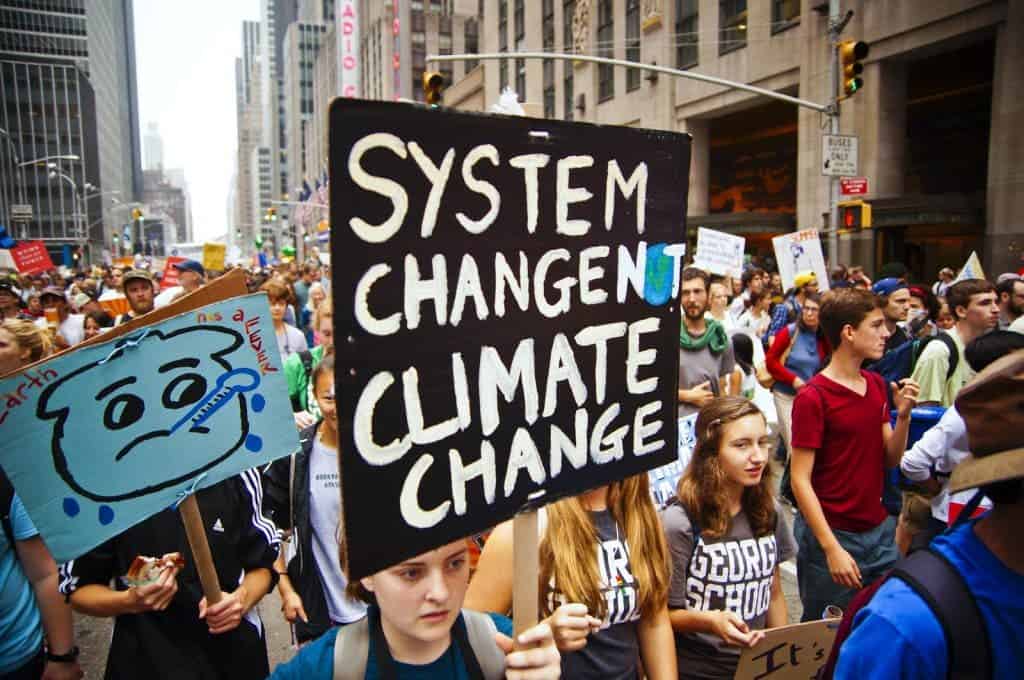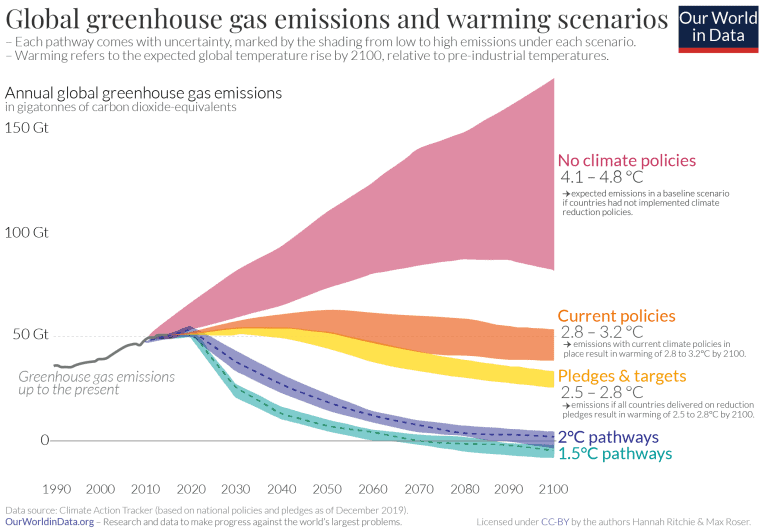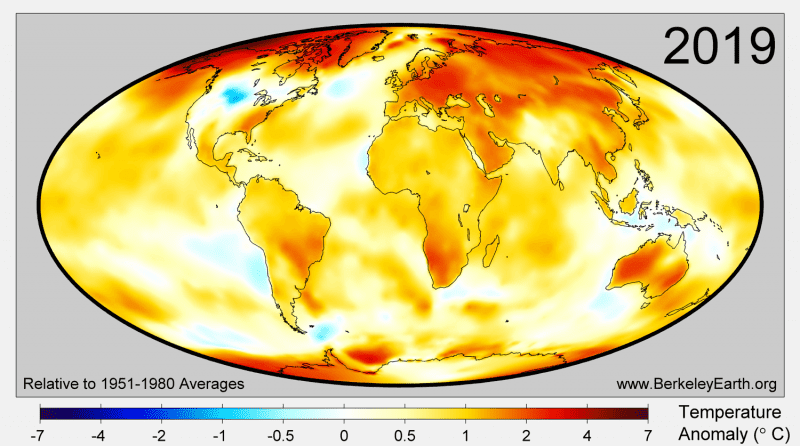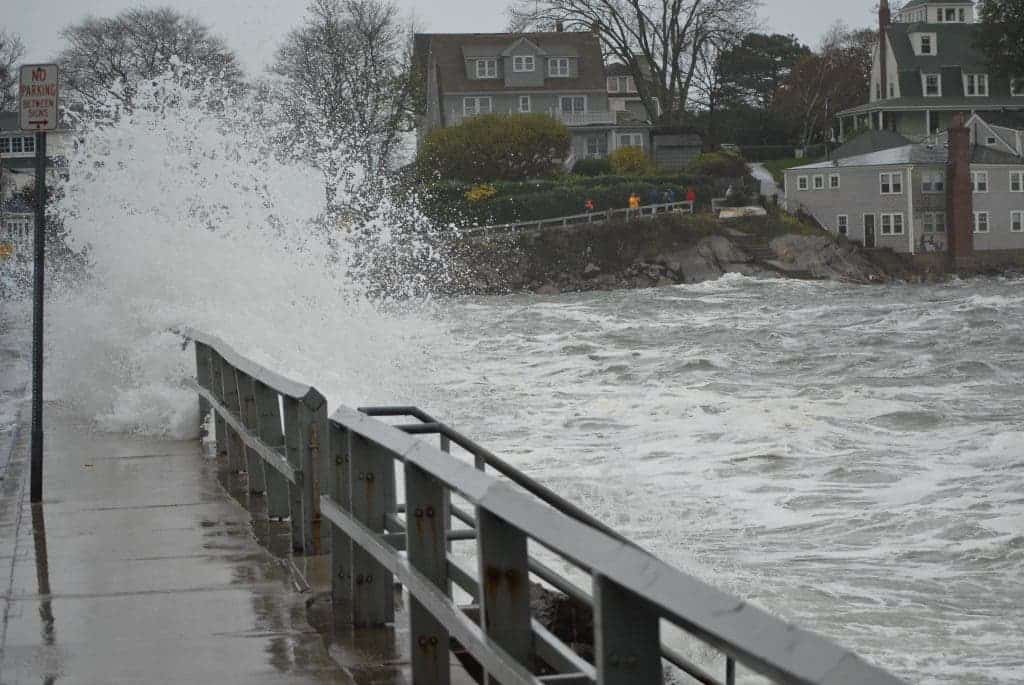We’re already past the point of preventing global warming — it’s happening. The only question now is how bad it’s gonna get.
There’s a big gap between 1.5ºC and 2ºC. Limiting global warming to 1.5ºC could mean 11 million fewer people exposed to extreme heat, 61 million fewer people exposed to drought, and 10 million fewer people exposed to the impacts of sea-level rise, scientists estimate. Simply put, the difference between 1.5ºC and 2ºC can be a catastrophe — and based on how things are going so far, we’re overshooting both.

Since the industrial revolution, the planet has already warmed over 1ºC — and the consequences are visible around the world, from extreme weather events to melting glaciers. But what we do from now on can make a big difference and help avoid further problems. That’s why researchers, campaigners, and some politicians are asking countries for more ambitious climate plans to keep emissions in line for a 1.5ºC warming.
For decades, scientists have regarded a 2ºC warming by the end of this century as an absolute upper limit — anything higher, and the climate may spiral out of control, with devastating consequences. But avoiding the absolute worst isn’t necessarily the best thing we can aim for. Increasingly, researchers are arguing 1.5ºC is a far safer limit for the world.
But neither of these targets will be easy to achieve, and both require transforming the global economy. The stakes have never been higher.
This is also reflected in the 2015 Paris Agreement on climate change, where all the countries in the world (now that the US has rejoined) pledged to reduce their emissions to keep the world well below 2°C above pre-industrial levels. But they also introduced a more ambitious goal, aiming at 1.5º if possible.
Where are we at now?
We are still falling short of necessary action; very short. Since 2015 global greenhouse gas emissions have continued to grow, with a billion tons of CO2 added to annual figures between 2015 and 2018, according to the Global Carbon Project. This increase is mainly dominated by emerging economies such as China and India, although historic emissions come from developed countries like the US and countries in the European Union.
Countries would have to collectively increase their climate action threefold to be in line with the 2ºC goal of the Paris Agreement, UN estimates. Meanwhile, to be in line with the 1.5ºC target, they would have to do so fivefold. The world is now heading to global warming of about 3ºC based on the current climate pledges. In other words, we’re not doing nearly enough.
Even if the current pledges are respected (which is not at all clear at this point), we’re not really headed towards the 2ºC goal. Basically, our countries’ promises are falling short of the objective, and they’re not even respecting these promises.

As emissions rise, so does the global temperature. Last year’s temperature reached a 1.2ºC increase above pre-industrial levels, with a 20% chance of exceeding 1.5°C by 2024. Breaking that limit would bring trigger all sorts of severe consequences on the planet such as further coral bleaching, heat waves, floods, and sea-level rise.
Climate change isn’t like a small car you can just stop, or a switch you flick on or off. It’s more like a huge truck, and if you want to stop it, you first need to slow it down — and just like a truck, if it gets out of control, it’s almost impossible to bring it back on track.
In the case of climate, the difficulty comes from mechanisms called feedback loops. For instance, if temperatures rise, snow and ice melt, leaving behind darker surfaces. These darker surfaces absorb more sunlight and more heat, rising temperatures even more, melting ice, and so on. Another such mechanism is the release of methane (a potent greenhouse gas) currently stored in permafrost ice that’s starting to melt.
But not all is lost. Some positive signs of climate action were seen last week in the virtual climate summit organized by US President Biden. The US, which had left the Paris Agreement under former President Trump, committed to 50% emissions reductions by 2030. Meanwhile, Japan said it would cut emissions by 46% and Canada by 40% to 45%.
Why 1.5ºC?
The Intergovernmental Panel on Climate Change (IPCC), a group of leading climate experts from around the world, published in 2018 a report that looked at how the impacts of a 1.5˚C temperature limit differ from 2˚C. The findings show that this seemingly small half a degree could make a striking difference.
About 14% of Earth’s population will be exposed to severe heatwaves at least once every five years with a 1.5ºC warming, while at 2ºC that number jumps to 37%. Limiting warming to 1.5 degrees Celsius would also reduce the number of people frequently exposed to extreme heatwaves by about 420 million, the report showed.
Climate change doesn’t affect all the places on Earth equally, and it doesn’t mean that temperatures will uniformly rise by the same amount. The IPCC researchers also found that the hottest days would be up to 3ºC hotter at 1.5ºC warming and up to 4ºC warmer at 2ºC at the planet’s mid-latitudes. At warming above 1.5ºC, twice as many megacities as today are likely to become heat stressed, potentially exposing 350 million more people by 2050.

The list of effects just goes on and on.
Limiting warming to 1.5ºC would significantly reduce the probability of drought and risks related to water availability in some regions, particularly in the Mediterranean and in Southern Africa, South America, and Australia. A 2ºC global warming would increase by 61 million the number of people exposed to severe drought in urban areas.
Some regions would see an increase in heavy rainfall events at 2ºC compared to 1.5ºC, especially in the Northern Hemisphere high altitudes such as Alaska and Greenland. More of Earth’s land areas will also be affected by flooding and increased runoff. Heavy rainfall from tropical cyclones is projected to be higher at a 2ºC warming.
For small island states and low-lying countries, a 1.5ºC warming would mean preventing their territories from being inundated with seawater – as higher temperatures could cause more ice to melt and the seas to expand. That’s why they have been the main ones pushing the world to aim for 1.5ºC instead of 2ºC.
Of course, for wildlife, it would also be a big difference. Take coral reefs for example. They are projected to decline by 70-90% with warming greater than 1.5°C. With an additional half-degree of warming, more than 99% losses are expected. We are looking at a realistic chance of losing almost all the world’s corals if current trends continue.

Even if the temperature increase is limited to 1.5ºC, sea level will continue to rise, as heat already stored in the oceans causes them to expand. But that increase would be 0.33 feet (0.1 meters) lower at 1.5ºC than at 2ºC. If warming reaches 2ºC, 70% of the planet’s coastline would see sea-level rise greater than 0.66 feet (0.2 meters). This may not seem like much but it could force 200 million people to move within this century.
Overall, at 1.5ºC, the IPPC projects that climate-related risks to human health, livelihoods, food security, human security, water supply, and economic growth will all suffer — but at 2ºC, they’ll suffer way more.
The researchers also looked at the impacts of warmer world biodiversity. At 2ºC warming, 18% of insects globally, 16% of plants, and 8% of vertebrates are projected to lose more than half of their ranges. With 1.5°C of warming, this is reduced by two-thirds for insects, and by half for plants and vertebrates.
Pathways to 1.5ºC
As well as describing the difference between a 2ºC and a 1.5ª warming, the IPCC researchers explained what the world would need to do to avoid that extra half degree. There’s a suite of options that will have to be balanced but some of the key points from the policy recommendations include:
- The reduction of coal is non-negotiable. In all possible pathways, the use of coal for electricity generation needs to steeply decline to very close to zero by 2050. This has to be balanced with a significant increase of renewable energy sources, which the IPCC says should supply between 70% and 85% of electricity in 2050
- Changes in urban planning and deeper reductions in transport and building uses will be needed. A range of technical options will need to be utilized. Land use will also have to be remodeled extensively for higher energy crops. Significant reforestation increases of up to 9.5 million squared kilometers by 2050 are also suggested.
- Carbon removal will likely be needed in any 1.5° pathway, the IPCC argued. However, these technologies are developing, so relying on them will be inherently risky and filled with uncertainty. Options include reforestation, land restoration, some capturing technologies and capture and storage technologies. All have cost-benefits.
“Keeping warming to 1.5˚C will be hard. Really hard. But the IPCC report also makes it clear that the world has the scientific understanding, the technological capacity, and the financial means to tackle climate change. Now what we need is the political will to precipitate the unprecedented concerted actions necessary to stabilize temperature rise below 1.5 C,” the World Resources Institute, said in a report.


